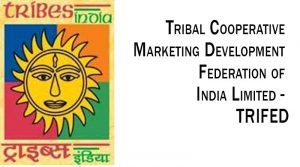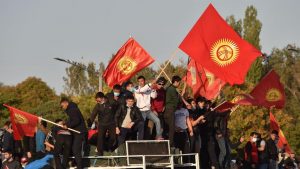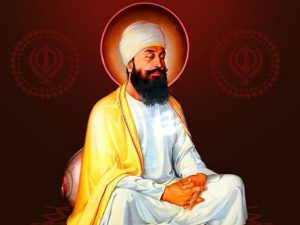Today Current Affairs: 1st May 2021 for UPSC IAS exams, State PSC exams, SSC CGL, State SSC, RRB, Railways, Banking Exam & IBPS, etc
Table of Contents
Operation Samudra Setu-II:

Indian Navy has launched Operation Samudra Setu-II to augment the ongoing national mission for meeting the Oxygen requirements.
- Mission deployed Indian Naval warships will undertake shipment of liquid Oxygen filled cryogenic containers and associated medical equipment in support of the nation’s fight against COVID-19.
- Two ships INS Kolkata and INS Talwar have entered the port of Manama, Bahrain for embarking and transporting 40MT of liquid oxygen to Mumbai. INS Jalashwa is en route to Bangkok and INS Airavat to Singapore for similar missions.
- Last year Indian Navy had launched Operation Samudra Setu as part of the Vande Bharat Mission and repatriated approx 4000 (3992) stranded and distressed Indian citizens from Maldives, Sri Lanka, and Iran.
Sustainable Livelihoods For Tribal Households in India:

TRIFED has now entered into a collaborative project titled “Sustainable Livelihoods For Tribal Households in India” with The LINK Fund, a philanthropic operational foundation that is mandated to eradicate extreme poverty and mitigate the effects of climate change.
- TRIFED and The LINK Fund have entered into an MoU on April 29, 2021, to work together towards Tribal Development and employment generation by providing support to tribals for increasing value addition in their produce and products.
- As a part of this association, both the organizations will also work together to creating women-centered infrastructure and innovation, and entrepreneurship.
- The LINK Fund (TLS) is a practitioner-led fund that, headquartered in Geneva, Switzerland and works to end extreme poverty and mitigate the effects of climate change.
Scheme of Financial Assistance to States for Capital Expenditure:

The Ministry of Finance, Government of India has decided to provide an additional amount of up to Rs. 15,000 crore to States as interest-free 50-year loan for spending on capital projects.
- The Department of Expenditure has issued fresh guidelines in this regard on the “Scheme of Financial Assistance to States for Capital Expenditure” for the financial year 2021-22.
- Under the Scheme, financial assistance is provided to the State Governments in the form of a 50-year interest-free loan. An amount not exceeding Rs.12,000 crore was earmarked for the scheme for the financial year 2020-21, and a sum of Rs.11,830.29 crore was released to the States.
- This helped to sustain state-level capital expenditure in the pandemic year.
- In view of the positive response to the scheme and considering the requests of the State Governments, the Government has decided to continue the scheme in the year 2021-22.
- The Scheme for Special Assistance to States for Capital Expenditure for 2021-22 has three Parts:
- Part-I: This part of the scheme is for the North-East and the Hill States and an amount of Rs.2,600 crore has been earmarked for this part. Out of this, Assam, Himachal Pradesh, and Uttarakhand will get Rs 400 crore each while the remaining States in this group have been allocated Rs 200 crore each.
- Part-II: This part of the scheme is for all other States not included in Part-I. An amount of Rs 7,400 crore is earmarked for this part. This amount has been allocated amongst these States in proportion to their share of central taxes as per the award of the 15th Finance Commission for the year 2021-22.
- Part-III: This part of the scheme is for providing incentives to States for monetization/recycling of infrastructure assets and disinvestment of the State Public Sector Enterprises (SPSEs).
- An amount of Rs.5,000 crore is allocated for this part of the scheme.
- Under this part, States will receive interest-free 50 years loans ranging from 33% to 100% of the amount realized by them, through assets monetization, listing, and disinvestment.
Positron And Positron Excess Phenomenon:

Researchers from the Raman Research Institute (RRI), Bengaluru, have resolved the mystery of the antimatter counterpart of the electrons called Positron and Positron Excess Phenomenon.
- RRI is an autonomous institution of the Department of Science and Technology.
- Antimatter is the opposite of normal matter. More specifically, the sub-atomic particles of antimatter have properties opposite those of normal matter.
- Matter is made up of atoms, which are the basic units of chemical elements such as hydrogen, helium or oxygen.
Atoms are the basic units of matter and the defining structure of elements. atoms are made up of three particles:
- Protons, Neutrons and Electrons.
A positron is a subatomic particle whose mass is the same as that of an electron and numerically equal but positively charged particle. The positron was discovered in 1932.
- Positron Excess: The excess number of high energy particles of the antimatter counterpart of the electrons, called positrons have intrigued scientists for long.
- Over the years astronomers have observed positrons having an energy of more than 10 giga-electron volts, or 10 GeV.
- For an estimate, this is the energy of a positively charged electron accelerated across a 10,000,000,000 volt battery. Positrons with energy more than 300 GeV, however, are lower in comparison to what astronomers expect.
- This behaviour of positrons between 10 and 300 GeV is what astronomers call the ‘positron excess’.
Raman Research Institute Study:
- The Milky Way consists of giant clouds of molecular hydrogen.
- They are the seats of the formation of new stars and can be as massive as 10 million times the Sun’s mass.
- They can extend up to 600 light-years.
- Cosmic rays, produced in supernovae explosions propagate through these clouds before they reach the Earth. Cosmic rays interact with molecular hydrogen and can give rise to other cosmic rays.
- As they propagate through these clouds, they decay from their original forms and intermix, lose their energy by energising the clouds, and may also get re-energised.
- RRI studied all these astrophysical processes via a code it set up on the computer, using a publicly available code.
- RRIs Code: The code considers 1638 molecular hydrogen clouds in the Milky Way that other astronomers have observed across different wavelengths of the electromagnetic spectrum.
- RRI followed a comprehensive catalogue that consists of ten molecular clouds in the immediate neighbourhood of our Sun.
- These galactic clouds provide the astronomers a crucial input that is the number of giga-electron volt cosmic rays.
- These help them determine the excess number of positrons that reach the Earth.
- The computer code was successfully able to reproduce the observed number of positrons at giga-electron volt energies.
- Not only the positron excess, the computer code accurately reproduces the spectra of protons, antiprotons, boron, carbon, and all other components of cosmic rays.
Kyrgyzstan And Tajikistan:

A ceasefire on the border between Kyrgyzstan and Tajikistan appeared to be held after a day of intense fighting between the two countries that have killed about 40 people and wounded about 175.
- Kyrgyzstan and Tajikistan belong to the central Asia region. Other countries of the region are Kazakhstan, Turkmenistan, and Uzbekistan.
- Both nations have claimed the area around the water supply facility in Kok-Tash, a dispute dating back decades to when they were both parts of the Soviet Union.
- The current configuration of the Kyrgyz-Tajik border is the product of Soviet mapmakers drawing the dividing lines for Soviet republics after the Union of Soviet Socialist Republics (USSR) collapsed in late 1991.
- The meandering boundary between Tajikistan and Kyrgyzstan is particularly tense as over a third of its 1,000-km length is disputed. Restrictions on access to land and water that communities regard as theirs have often led to deadly clashes in the past.
- Russia and European Union (EU) welcomed the ceasefire deal and emphasized the need for a lasting and peaceful solution.
Guru Tegh Bahadur:

Sri Akhand Path was inaugurated at Gurdwara Guru Ke Mahal, the birthplace of the ninth Sikh guru, Guru Tegh Bahadur, to mark the 400th Prakash Purab (birth centenary) of the Guru.
Guru Teg Bahadur (1621-1675):
- Guru Tegh Bahadur was the ninth Sikh Guru, often venerated as the ‘Protector of Humanity’ (Srisht-di-Chadar) by the Sikhs.
- Known as a great teacher, Guru Tegh Bahadur was also an excellent warrior, thinker, and poet, who wrote detailed descriptions of the nature of God, mind, body, and physical attachments among other things spiritual.
- His writings are housed in the sacred text, ‘Guru Granth Sahib,’ in the form of 116 poetic hymns.
- He was also an avid traveler and played a key role in setting up preaching centers throughout the Indian subcontinent.
- During one such mission, he founded the town of Chak-Nanki in Punjab, which later became a part of Punjab’s Anandpur Sahib.
- In the year 1675, Guru Tegh Bahadur was executed in Delhi under the orders of the Mughal Emperor Aurangzeb.
The Vande Bharat Mission::

The Vande Bharat Mission (VBM), which started repatriating Indians stranded abroad due to Covid-19 and the resultant lockdowns since May 2020, has become one of the largest evacuations of civilians by a country.
Vande Bharat Mission (VBM):
- It is the biggest civilian evacuation exercise to bring back Indian citizens stranded abroad amidst the coronavirus-induced travel restrictions.
- It has surpassed the large-scale airlift of 1,77,000 people in 1990 at the onset of the Gulf War.
- The mission is undergoing its 10th phase and has carried 32 lakh passengers approximately both inbound and outbound.
- National carrier Air India, along with its budget carrier Air India Express (AIE) carried out the bulk of air transfers under the mission.
- AIE used its fleet to lift agricultural products, mainly fruits, and vegetables (the most sought-after items among the NRI Indians), to West Asian countries, Singapore and Kuala Lumpur.
- Besides, helping distressed rural farmers and the NRIs, the aim of the mission is to keep the supply chain intact.
- While overseas Indians from as many as 93 countries have availed repatriation through the VBM, the government has entered into special travel arrangements called ‘air travel bubbles’ with 18 different countries so far.
- Transport bubbles or air travel arrangements are temporary arrangements between two countries aimed at restarting commercial passenger services when regular international flights are suspended as a result of the pandemic.
- It allows carriers of both countries to fly passengers either way without any restrictions.
- Reciprocal in nature, the bilateral pact aims to benefit airlines from both countries with faster repatriations.
- Due to a recent spurt in Covid-19 cases in the country and many countries of late, patronage has come down in the VBM flights.
International Labour Day:

International Labour Day is being celebrated across the world on May 1.
- International Labour Day/international Workers Day is often referred to as May Day.
- The day is celebrated to honour the contribution of working men and women and to pay tribute to workers sacrifices in achieving economic and social rights all over the world.
- It is observed on May Day (1st May), an ancient European spring festival.
- The date was chosen by a pan-national organization of socialist and communist political parties to commemorate the Haymarket affair, which occurred in Chicago on 4 May 1886.
- In India, the first Labour day or May Day was celebrated in 1923 in Chennai.
Haymarket affair:
- During industrialization at the beginning of the 19th Century, the industrialists used to exploit the labour class and made them work up to 15 hours a day.
- The workers at Haymarket affair, in Chicago, rose against this exploitation and demanded paid leaves, proper wages and breaks for the workforce.
- The day marks the victory of the workers’ movement for eight hours of work.




